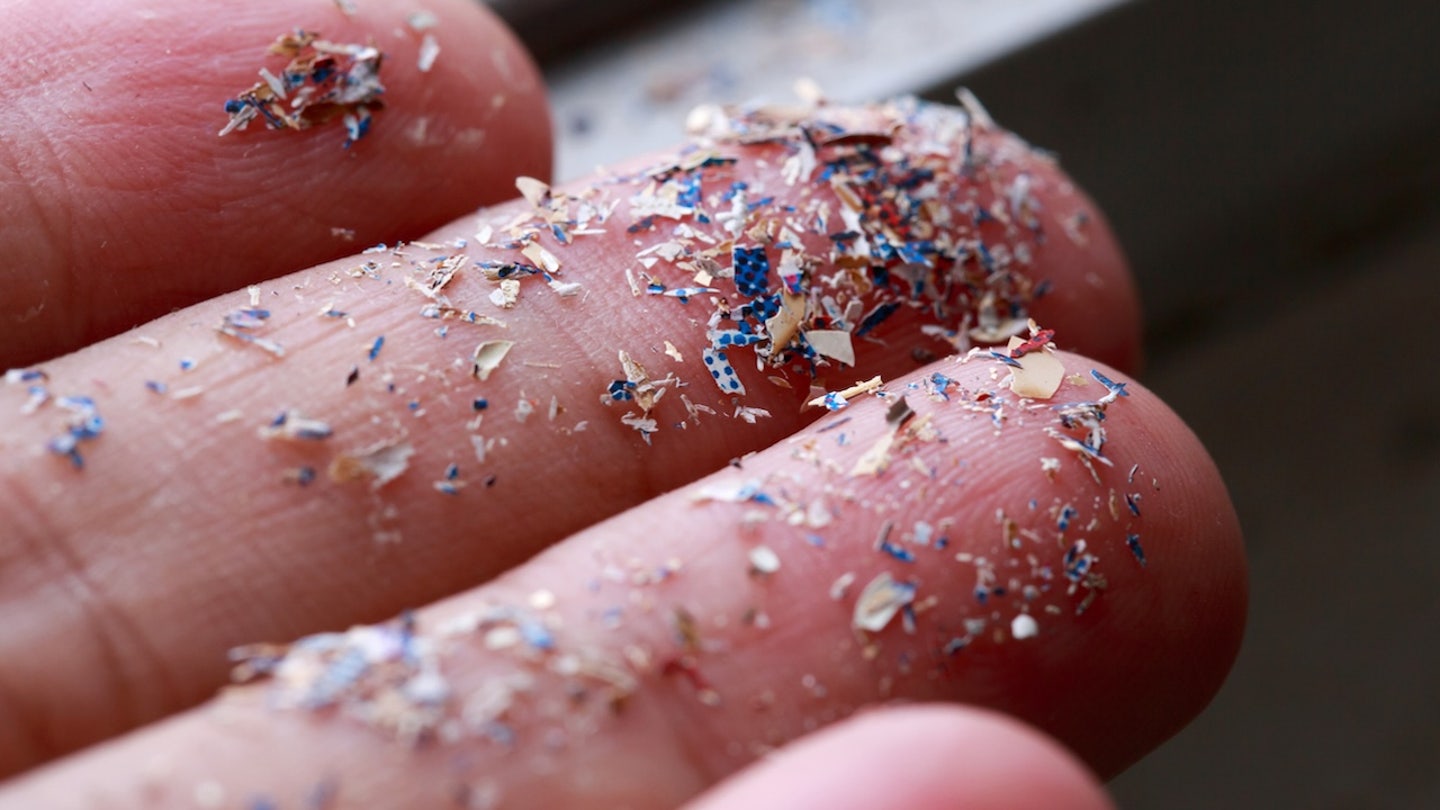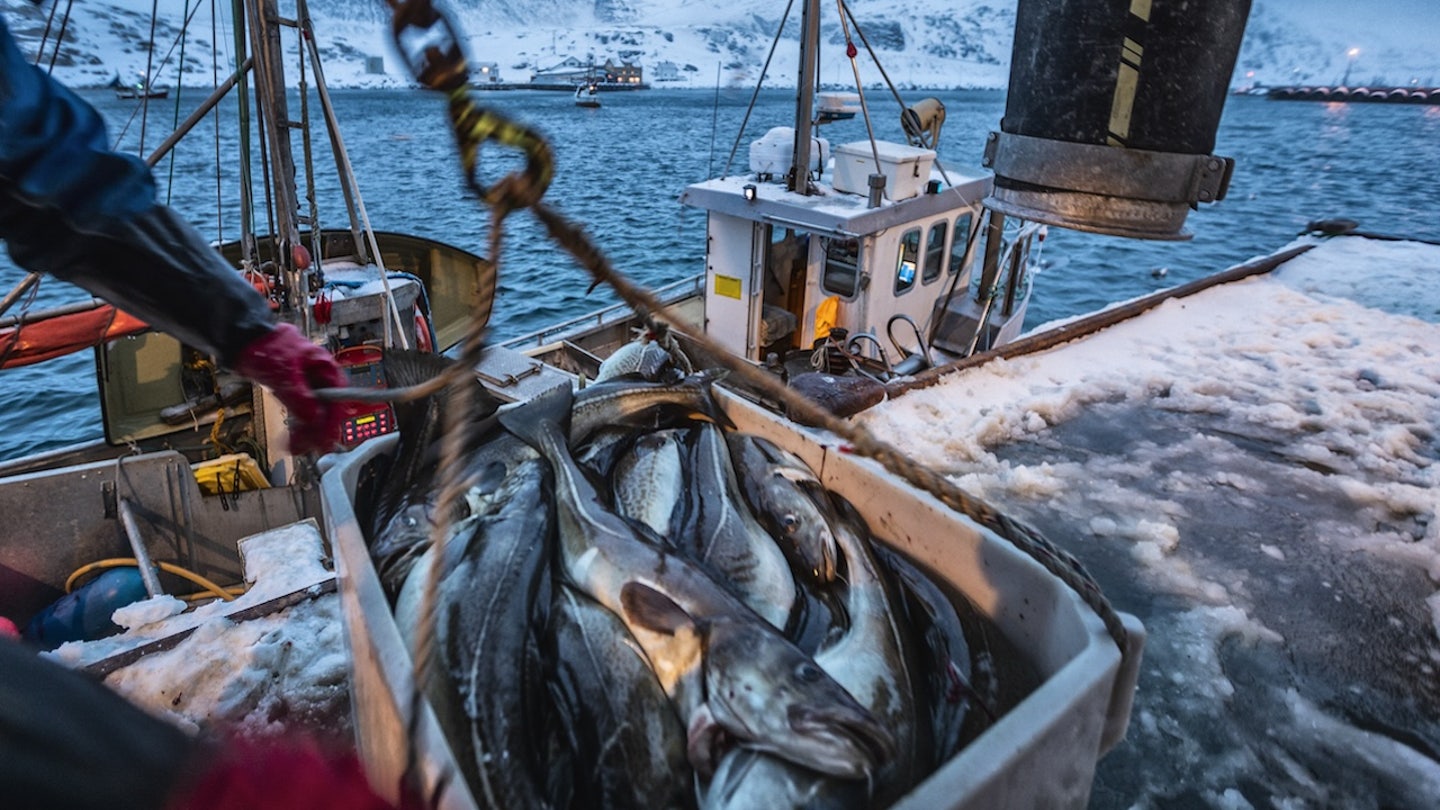Microplastics have been detected in virtually each and every seafood sample discovered off the coast of the western U.S. in a up to date find out about, researchers declare.
The find out about, led by way of Portland Circumstance College (PSU), recognized “anthropogenic particles” — that are fabrics produced or changed by way of people — within the fit to be eaten tissue of six other species of fish.
The ones incorporated dull rockfish, lingcod, Chinook salmon, Pacific herring, Pacific lamprey, and red shrimp, in keeping with a PSU press let fall.
MICROPLASTICS FOUND IN OVERWHELMING MAJORITY OF AMERICAN MEAT, WATER, PLANTS: STUDY
Particularly, the peer-reviewed find out about discovered microplastics — “tiny particles that shed from clothing, packaging and other plastic products” — in 180 out of 182 samples of seafood that have been both bought at a bind or received from a fishing boat in Oregon, the let fall said.
Microplastics have been detected in virtually each and every seafood pattern discovered off the coast of the western U.S. in a up to date find out about, researchers declare. (iStock)
The perfect focus of debris passed off in red shrimp, and Chinook salmon contained the bottom.
“We found that the smaller organisms that we sampled seem to be ingesting more anthropogenic, non-nutritious particles,” stated microplastics researcher and find out about co-author Elise Granek within the let fall.
BOTTLED WATER FOUND TO CONTAIN TENS OF THOUSANDS OF ‘TINY PLASTIC PARTICLES’ IN NEW STUDY
“Shrimp and small fish, like herring, are eating smaller food items like zooplankton. Other studies have found high concentrations of plastics in the area in which zooplankton accumulate, and these anthropogenic particles may resemble zooplankton and thus be taken up for animals that feed on zooplankton.”
“What we put out into the environment ends up back on our plates.”
Susanne Brander, an ecotoxicologist and assistant mentor in Oregon Circumstance College’s Faculty of Agricultural Sciences, added, “It’s very concerning that microfibers appear to move from the gut into other tissues such as muscle. This has wide implications for other organisms, potentially including humans.”
The findings have been printed within the magazine Frontiers in Toxicology.
Is it preserve to devour seafood?
The find out about authors don’t counsel that family in particular steer clear of seafood, as microplastics were extensively present in alternative meals merchandise, Granek famous within the let fall.
“If we are disposing of and utilizing products that release microplastics, those microplastics make their way into the environment, and are taken up by things we eat,” she stated.

Microplastics — “tiny particles that shed from clothing, packaging and other plastic products” — have been present in 180 out of 182 samples of seafood. (iStock)
“What we put out into the environment ends up back on our plates.”
The top prevalence of microplastics within the seafood samples does no longer mechanically cruel that eating seafood poses a right away condition possibility, in keeping with Bing Wang, PhD, assistant mentor of meals protection possibility overview on the College of Nebraska-Lincoln.
“’Safe’ is a relative term in toxicology,” Wang informed Fox Information Virtual. “Toxicity depends on dose and exposure duration — and currently, we lack a definitive understanding of linkage between the oral intake of microplastics and nanoplastics and the adverse effects in human health.”
STUDY LINKS MENTAL HEALTH RISKS TO THIS TOXIN FOR THOSE BORN IN ’60S OR ’70S
Professionals agree that the dietary advantages of seafood, comparable to top of the range protein and omega-3 fatty acids, play games a the most important position in a healthy diet, in keeping with Wang.
“There is no current evidence to suggest that seafood consumption poses an immediate danger to human health,” she added.
Resources of contamination
For this find out about specifically, Wang stated it’s the most important to acknowledge that past microplastics, nanoplastics also are provide within the atmosphere and meals provide.
“Unlike microplastics, which may pass through the digestive system with minimal absorption, nanoplastics are small enough to cross biological barriers, including the intestinal lining, potentially reaching the bloodstream and accumulating in organs,” she cautioned.
CLICK HERE TO GET THE FOX NEWS APP
In PSU’s findings, 80% of microplastics detected a number of the samples have been derived from clothes or textile fibers, however there are alternative assets of contaminants.
For the reason that Sixties, plastic manufacturing has greater by way of roughly 8.7% every year, in keeping with Andrew Ortiz, a PhD scholar within the area of meals science and generation at College of Nebraska-Lincoln.

The find out about authors don’t counsel that family in particular steer clear of seafood, as microplastics were extensively present in alternative meals merchandise. (iStock)
“Much of the contamination comes from everyday human activities, such as improper disposal of plastic products, littering, and inadequate waste management systems, which lead to plastics entering waterways and eventually reaching the oceans,” Ortiz informed Fox Information Virtual.
Utterly averting microplastics is difficult, Wang emphasised.
CLICK HERE TO SIGN UP FOR OUR HEALTH NEWSLETTER
“They are pervasive in the environment and present in various food sources, not just seafood,” she stated.
“Month this find out about is the primary of its type within the Oregon area, its findings align with global research on microplastic contamination in seafood,” stated Wang. “In fact, the levels reported in this study are within the global average.”
“There is no current evidence to suggest that seafood consumption poses an immediate danger to human health.”
“Given that humans already consume microplastics from multiple sources — including water, air and packaged foods — the presence of microplastics in seafood should be considered within this broader context rather than as an isolated risk,” she added.
For more Health articles, visit www.foxnews.com/health
The PSU find out about used to be funded by way of Oregon Sea Lend at Oregon Circumstance College.



